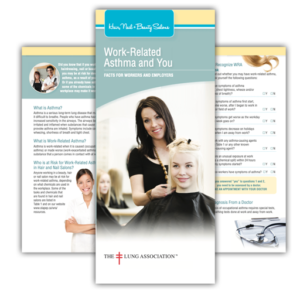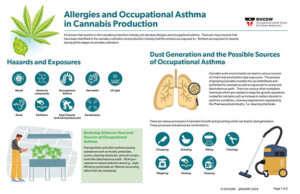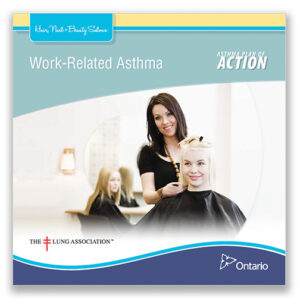...because Breath is Life
May 7 is World Asthma Day. Asthma is one of the most prevalent occupational hazards. Below is a selection of OHCOW resources on occupational asthma and allergens, including links to web info, an infographic, a podcast, webinars and brochures. For more information on World Asthma Day 2024, see the website.
Occupational Asthma
Types of Occupational Asthma
Occupational asthma, or work-related asthma, is asthma that happens for the first time because of exposure to some type of agent in the workplace. People who have asthma before may also have symptoms that get worse because of something at work.
Allergic Occupational Asthma
Allergic Occupational Asthma is an allergic reaction to something in the workplace. It might be a chemical or material. The symptoms are there at home but worsen in the work environment. Allergies develop over time, may be months or years, they are not an instant response. There can be a "latency period" — the time from the first exposure to the development of asthma.
Non-allergic Occupational Asthma or Reactive Airways Dysfunction Syndrome (RADS)
This type of asthma is caused by a high exposure to a chemical that irritates the airway (e.g. chemical spill, leak or a fire). It develops quickly and symptoms often stay for a long period of time. There is no latency period and this type is not an allergic reaction.
NEW! Hazards for Workers in the Cannabis Industry
Workers in the cannabis industry are at high risk for developing allergies and occupational asthma, during the cultivation, harvesting and packaging process. OHCOW produced an infographic that gives an outline of health concerns for cannabis production workers. You can download the pdf for your reference, print it out to post in a work area, or email it to others.
Download pdf:
Listen to Podcast
Apps
Webinar
A presentation made by Dr. Mike Pysklywec, OHCOW (Hamilton) as part of the 2015 Occ-tober Webinar Series: Occupational Disease Incidence + Prevention
VIEW SLIDES [PDF]
Nail Salons
Nail Salons are another work environment where fumes and airborne particles can cause allergic reactions and asthma. See an informative brochure on safety information and protective measures:

[PDF]
[PDF]






Comments are closed.